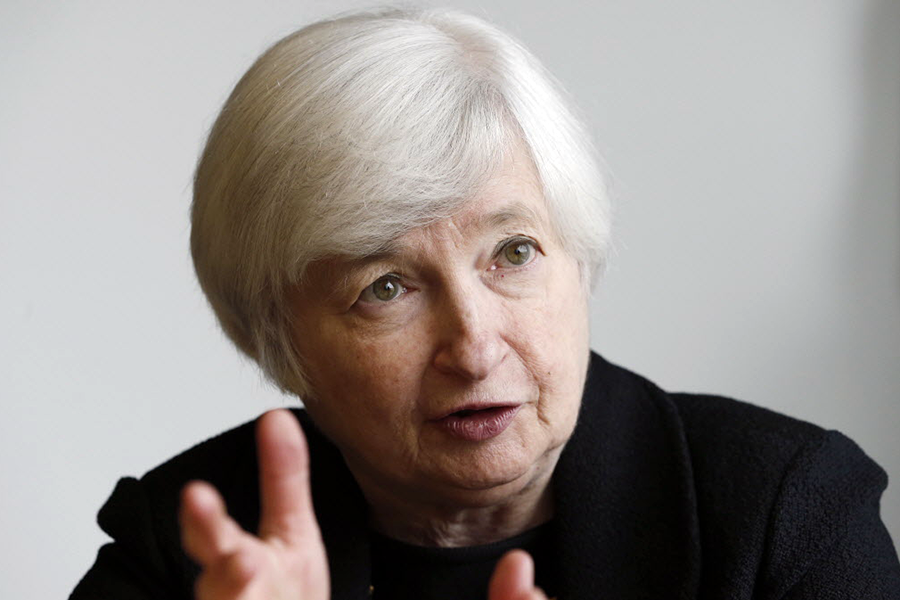Economic inequality in the US reaches levels not seen since Great Depression
Loading...
It's 2014, but when it comes to wealth inequality in the United States, it's starting to look a lot like 1929.
In the late 1920s, the top 10 percent of Americans possessed 84 percent of the country's wealth. Since then, wealth inequality in America has followed a U-shaped trajectory, declining through the Great Depression until the mid-1980s, then steadily increasing since then. Now, the richest Americans have a share of the country's wealth almost big enough to rival those in the late 1920s, according to a new study
The study, from Emmanuel Saez of the University of California at Berkeley and Gabriel Zucman of the London School of Economics, uses a greater variety of sources to paint its picture of wealth inequality in the US than other recent analyses.
Recent economic growth in the US appears to be positive and steady. The latest jobs report for October saw unemployment drop to a six-year low and the economy add 214,000 jobs. But while more people appear to be working, America's overall wealth is being concentrated in fewer and fewer hands.
According to an analysis of data sourced through 2012 – including detailed data on personal income taxes and property tax – Professors Saez and Zucman found that the richest 0.1 percent of Americans have as much of the country's wealth as the poorest 90 percent. Both groups control roughly 22 percent of total wealth, but while the average wealth of the bottom 90 percent is $84,000, the top 0.1 percent were comprised of 160,700 families with net assets above $20 million, according to their study.
An even closer look at their data has shown that while the growth of the American middle class has been restricted by modest income growth and soaring debt –thanks in large part to the 2008 mortgage crisis – the super-rich have been making significant gains in income and wealth.
While the bottom 90 percent of Americans and the top 0.1 percent control about 22 percent of the country's wealth each, the top 0.01 percent of Americans now control 11.2 percent of total wealth. That share of the wealth held by the country's richest 0.01 percent – a group of roughly 16,000 families with an average net worth of $371 million – is the largest share they've had since 1916, the highest on record, according to the study.
The study's authors say that income inequality in the US is less extreme than wealth inequality, even though both have been increasing steadily for decades.
Real income for the top 1 percent of Americans grew 3.4 percent a year from 1986 to 2012, while those for the bottom 90 percent grew 0.7 percent, according to The Economist. And according to the Saez-Zucman study, the top 0.1 percent wealth share is about as large as the top 1 percent income share in 2012.
"By that metric, wealth is ten times more concentrated than income today," the authors write in their study.
In an interview, Zucman says he was surprised that income inequality had not improved in the US since the Great Recession in 2008, triggered in part by the mortgage crisis that still weighs heavily on the middle class.
"I expected that things would slow down," he says, referring to rising income inequality.
Instead, the average wealth of the bottom 90 percent of Americans has not changed since 1986, around the same time the average wealth of the richest Americans started to increase.
"That is almost 30 years of zero growth in the bottom 90 recent of the distribution," Zucman says. "That is very extreme and very surprising, and unique to the United States."
The Economist, in its report on the study, notes that America's super-rich contain not only entrepreneurs like Mark Zuckerberg, but heirs and heiresses like Paris Hilton. In recent years, the proportion of wealth held by the very rich in the form of bonds has risen, while the proportion held in stocks has declined, meaning that an increasing portion of America's wealth could be inherited rather than built through business.
"Since the fortunes of most entrepreneurs are tied up in the stock of the firms that they found," The Economist concluded, "these shifts hint that America’s biggest fortunes may be starting to have less to do with building businesses."
Zucman says that the wealth of the top fraction of Americans is a lot more established than people tend to imagine.
"People tend to imagine that a lot of the wealth at the top is newly created," he adds. "Actually, when you look at the data that’s not the case."






